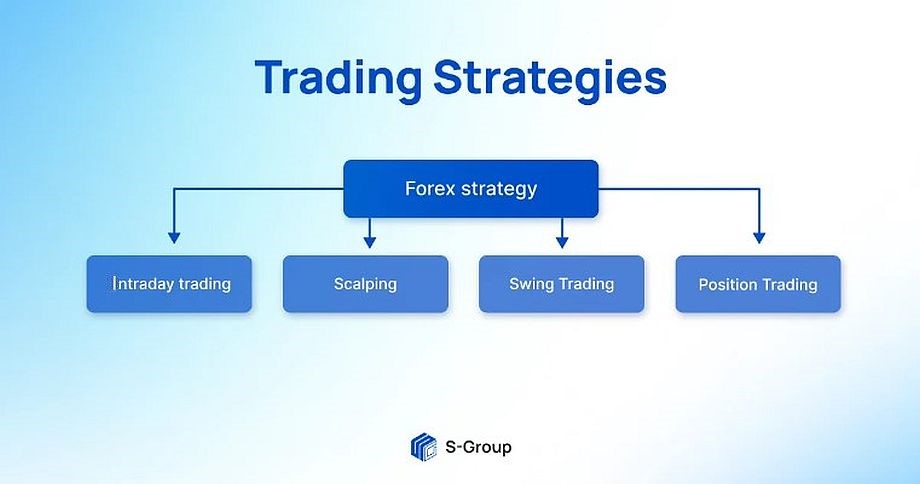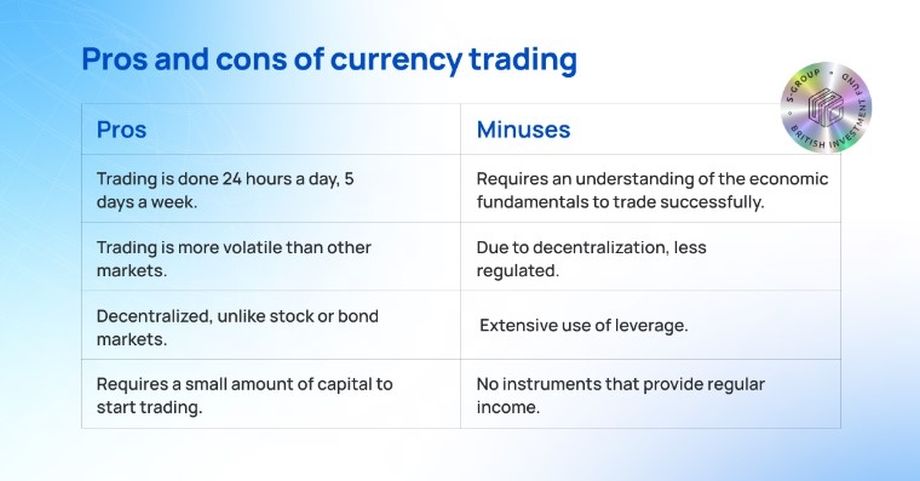What is the currency market
What is the currency market? The foreign exchange market is the largest financial network. It has an average daily trading volume of $5 trillion, far greater than the turnover of the stock market. It is decentralized, all transactions take place through computer networks between traders around the world, not on one centralized exchange.
What is the currency market: History and Definition
After U.S. President Richard Nixon abolished the gold standard and abandoned the Bretton Woods Accords in 1971, currencies began to fluctuate freely against each other. This led to the emergence of asset trading.
The foreign exchange market is a place where you can buy or sell assets and which determines the exchange rate of assets around the world. Trading involves: commercial and central banks, investment companies, brokerage firms and private investors buying, selling, exchanging and speculating on the rates of various currency pairs. It works in almost all time zones. When the trading day ends in the United States, trading opens in Tokyo and Hong Kong.
Read more about the Forex market: what it is and how you can make money in it in this article.
What are currency pairs + main types
Assets are traded in pairs. The same thing you can see when you go to an exchanger. This means that when a trader buys one asset, he is simultaneously selling another, and vice versa. For example, if a trader wants to buy EUR/USD, he will buy euros and sell dollars at the same time.
In pairs, there are bases and quoted currencies, the value of which depends on each other. For example, GBP/USD means buying GBP and selling USD. GBP is the base currency and USD is quoted. The price of the pair depends on whether the base currency is rising or falling. That is, if the GBP rate goes up, it will be worth more dollars and the price of the pair will go up. If the exchange rate falls, then the price of the pair will go down.
There are three categories of currency pairs:
– The major ones are the assets of the biggest economic players, paired with the U.S. dollar. For example, EUR/USD.
– Secondary — pairs with major currencies, but without the U.S. dollar. For example, EUR/GBP.
– Exotic — when a major currency is paired with a minor or emerging currency. For example, EUR/NOK.
Operations that may be executed with the assets
Spot operations
A spot transaction is a transaction in which banks commit to deliver an asset no later than the end of the second day after the transaction. They are convenient if a large amount of money is needed urgently. But there is risk in them as well. Because the exchange rate is volatile, you can buy an asset today at one price, and at the time of delivery it can fall many times over.
Urgent transaction
There are several subcategories here:
– Futures transactions – buying or selling an asset at a set price. You can draw an analogy with prepayment buying.
– Forward operations – similar to futures. They differ in that they are executed over-the-counter.
– Options – they are not binding to buy or sell. They look like a request to hold a product for you in a store.
– Swaps – a complicated version of futures. In this case, two contracts are created. One specifies the terms of purchase/sale at the time of the deal, the second specifies the terms of purchase/sale in the future.
– CFD (contract for difference) – it accounts for the price difference of the underlying asset. If an asset becomes cheaper, the difference is paid by the buyer; if it becomes more expensive, it is paid by the seller. It is similar to the seller’s offer to pay the price difference if the buyer finds the goods cheaper.
Trading Strategies
The choice of trading strategy determines the success of the trade. Depending on the duration and number of transactions, trading strategies can be divided into four types.
1. Scalping. It is a fast strategy. You need to open many deals and close them within 15 minutes. Each operation will give a small profit, but in the end, there is a chance to get a big income.
2. Intraday trading. Transactions that remain open throughout the day. Using this strategy, the trader can fully monitor the situation and not worry about price impulses at night.
3. Swing Trading. With this strategy, a trader can hold trades from one day to one week in order to profit from short-term price changes.
4. Position Trading. Long-term investing from several weeks to months. This trading strategy requires good analytical skills.
What is the currency market
Glossary: key terms you should know
Forex account — this is the account you use to trade.
Ask — the price at which an asset is bought.
Broker — a company which accompanies you during transactions and takes a commission for this.
Rate — a price at which you are ready to sell an asset.
Currency pair — a tool for carrying out financial operations. There are base and quoted currencies in a pair.
Volatility — degree of rate changing in a certain period.
Leverage is the use of borrowed funds to increase your capital. For example, if you have $1 and the leverage is 1:500, your capital will increase by 500 times.
Margin — the pledge amount, on which a broker gives a credit for trading operations.
Order — an instruction given by a trader to a broker to open or close a trade.
Spread — the difference between the buying and selling price of an asset.
Pros and cons of currency trading
Finally, we want to say that the currency market is a complex system, which does not work in a couple of hours to understand. You need to understand the economy, its influence on the currency, and to be able to process and analyze data in order to choose the right strategy. The robot can help you do this, based on artificial intelligence, which processes large amounts of data in minutes and instantly makes decisions, leading to an increase in profits and a decrease in losses. You can read more about its work here.


